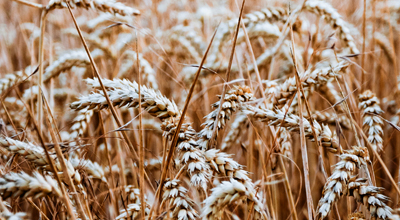
Image: Pixabay
The São Paulo wheat production chain met, remotely, on the morning of March 3, for the first meeting of the grain Sector Chamber in the state to evaluate the numbers achieved in 2020, the cereal market and estimate this harvest. year.
According to the survey carried out based on reports from the largest cooperatives in São Paulo, the state predicts an increase in area of up to 15%, with a new production record. “If we have a positive year in relation to the climate and producers' expectations come true, we will have a production of approximately 340 thousand tons in São Paulo”, stated the president of the Wheat Sector Chamber, Victor Oliveira.
The meeting, which included the participation of different links in the chain, debated, in addition to this year's harvest estimates, the 2020 numbers and the market scenario in the first two months of 2021. “According to the numbers collected at the end of the year, together with the cooperatives and the wheat movements recorded in recent months, we can say that São Paulo reached 300 thousand tons produced. Part of the wheat produced in the state, according to the cooperatives, is still in stock and will be sold over the next few days”, highlighted Oliveira.
On the mills' side, this is a time of great uncertainty, with a lot of volatility, a factor that makes life difficult for the milling industries, due to the complexity of pricing the product on the market. “We can say that this was one of the beginnings of the year with the lowest sales volume, with very low numbers in the state. Factors such as the strike in Argentina and the high price of wheat result in a significant drop in crushing in São Paulo, which has lost share on the national scene”, highlighted the president.
{module Form RD}
Market overview
Sodrugestvo's Wheat Head Sales – Brazil, Douglas Araujo, was invited by the Chamber to present to the meeting participants an overview of the wheat market in the world, highlighting the opportunities and estimates for the grain in Brazil.
According to him, the world has been going through a cycle of rising commodities, a fact always observed after a period of recession like the one being experienced with the pandemic. “We observed an upward movement in corn, which directly reflects on wheat prices. Maritime freight, for example, which was stabilized, increased by 80% at the beginning of the year, when compared to December 2020, increasing by up to 15$ per ton. We do not see any relief from this scenario in the short term.”
The presentation also highlighted the possibility of selling Lithuanian wheat in the state, which, unlike Russian, can be milled in the interior of São Paulo, without phytosanitary restrictions. “The two wheats, from Russia and Lithuania, reach the market in the same period as that produced in São Paulo. We are sure that producers in São Paulo can invest in grain production, as whatever is not absorbed by the mills can be easily sold to other states or even outside the country”, he stated.
At the end of the meeting, Embrapa Trigo presented an alert system for wheat blast, a disease that causes losses and frustration in the contaminated harvest. According to the presentation, this system, which was developed by the entity, analyzes the conditions of the grain crop, signaling whether the scenario is favorable or not for the development of the disease in the area analyzed.
Source: Notícias Agrícolas












